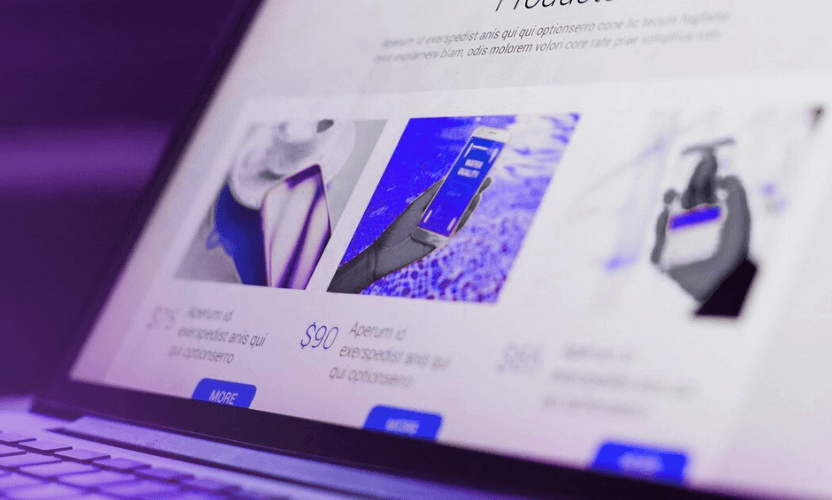As experts in the field, we have called upon our experience and knowledge to produce the following guide to protecting your brand online. The first of our new ‘How To’ series looks at the threats that brands may face online.
All brands face threats online. As more and more people shop, consume and interact via online channels it has become more and more necessary to have a clear and defined brand protection strategy. Effective brand protection strengthens and adds value to your business. The web landscape is changing faster than ever, and a fixed strategy established 2 years ago, is unlikely to be effective in tackling new forms of threat that have only emerged in the last month or so. As a result, strategy needs to be flexible, proactive and responsive – not an easy feat.
Brand Protection starts with understanding the threats that you may face. After all, we can only design an effective strategy if we know what we are trying to combat. Once this is done, we can concern ourselves with proactive protection, avoiding risks and fighting back against threats, thieves and copycats.
There are a wide range of online brand threats and each one can detract from the value of your business. We have outlined the key threats below.
Sale and Availability of Counterfeits

The term ‘counterfeit’ refers to a fake product that intends to deceive consumers by passing itself off as authentic. Usually, the product will, at first glance, look identical to the real deal. Many counterfeiters have highly sophisticated processes and are skilled at recreating logos and branding. However, the products aren’t flawless and are often made with substandard materials. The most worrisome part is in almost all cases, safety tests are neglected. Counterfeit products deplete revenues, tarnish brand and product reputation and put consumers in danger.
Theft and Infringement of Brand Name
Building a brand identity is no easy task. It is the foundation of marketing and essential in creating a good reputation for your product. Finding out that someone has stolen your brand’s name is infuriating. Unfortunately, this is a very common form of intellectual property infringement. Sellers see a product doing well and hope to use the name association to sell their own products. This is especially common in online descriptions where copycats will use reputable brand names to increase hit rates on their product listings.
Infringement of Trademarks
Much like brand name infringement, trademark infringement involves the unauthorised use of registered terms, figures and/or phrases to sell products that do not belong to the brand that registered them. This can include names of product lines, slogans, logos and even hashtags. Infringers are getting more creative by the day, meaning that in many cases a letter or a word is changed to get around the law. However, this can be combated with ‘confusingly similar’ counterclaims. Registering trademarks is the best first defence for brands from copycats and IP thieves.
Copyright Theft
There are two forms of copyright protection, registered and unregistered. In short, Copyright infringement is the theft of someone’s work or creation. The scope of the coverage is vast and anything from a book to a song to a logo can be protected. While registered intellectual property is often seen as the strongest form, in the case of copyright this isn’t necessarily true. In many cases, proof of creation with a date, such as a posting on a website or social media page, can be enough to have the infringements removed. If someone does not have your permission to use your copyrighted images, videos, prints and artworks to profit for themselves, it can be taken offline.
Design and Utility Patent Infringements

Both design and utility patents can be a strong addition to a brand’s intellectual property portfolio. Many entrepreneurs will tell you that good ideas are often hard to come by, and so when one does, it can be heartbreaking when someone copies the concept or idea in full. A design patent can help protect the individual pieces within a design. This provides intellectual property protection for the unique visual appearance of your product, preventing others from copying or imitating its design. This can include the shape, pattern, colour, or ornamentation of your product.
By obtaining a design patent, you can prevent competitors from selling products that look similar to yours, protecting your brand’s reputation and market share. Additionally, having a design patent can provide legal recourse if someone infringes your design, allowing you to take swift action to protect your brand.
In the UK, design patents are available through the Intellectual Property Office (IPO). The process involves submitting an application detailing the unique design of your product and paying a fee. Once granted, a design patent typically lasts up to 25 years, providing long-term protection for your brand.
Brands can also obtain a utility patent that can protect the overall function of the product. This type of patent protection won’t be relevant for all businesses and can be costly, but in many cases, they are worth their weight in gold. These grant the owner exclusive rights to a specific invention. When it comes to online brand protection, securing a utility patent can be a crucial step in safeguarding your innovative products or services from potential IP rights infringement. Obtaining a utility patent prevents others from manufacturing, using, selling, or importing your patented invention without your permission.
If you have an invention or a unique design make sure to explore these options before coming to market.
Clone Site Scams
Clone sites are an increasingly common issue. Clone sites refer to webpages that mimic that of brands’ official online marketplaces in order to mislead consumers into entering their card details to complete a ‘purchase’. Products are often offered at too good to be true discounts of 60-70%. These sites can be used by criminals to either sell counterfeit stock or, more commonly, capture unwitting shoppers’ card details. Whilst consumers are the worst hit by such scams, they offer a serious threat to brands’ reputations as well as the working time of employees – as they often find themselves inundated with complaints when shoppers receive no order or find they have had their bank accounts emptied. Clone Sites are often advertised via paid social media adverts masquerading as official discount sale offers. Social media accounts and apps themselves can also be cloned, further murkying the waters for both brands trying to protect their IP, and consumers who may be duped by the fake account or the application itself.

One effective way to combat these scams is through proactive domain name monitoring and enforcement efforts. By regularly monitoring online platforms for any unauthorised use of a company’s brand or trademarks, businesses can quickly identify clone sites and take action to have them removed.
Another strategy for combatting clone site scams is to educate consumers on how to spot fake websites. This can include providing information on how to verify the legitimacy of a website, such as checking for secure payment options and looking for contact information. By empowering consumers to be vigilant and report suspicious websites, businesses can work together with their customers to shut down clone sites before they cause harm.
Additionally, businesses can work with online brand protection services like SnapDragon, which specialises in identifying and removing online brand threats such as clone sites. These services use advanced protection technology to monitor the web for any unauthorised use of a brand’s assets, including websites that mimic the company’s official online presence. By partnering with these protection experts, businesses can take a proactive approach to online protection and prevent clone site scams before they harm consumers.
Legal action can also be taken against clone sites to enforce intellectual property rights and deter criminals from engaging in these deceptive practices. By working with legal professionals to issue cease and desist letters or take further legal action, businesses can send a clear message that clone site scams will not be tolerated. This can help to protect both the brand’s reputation and the financial interests of the company and its customers.
Unauthorised Sellers and Grey Market Trading
Managing a supply and distribution chain can be a daunting process and one that gets particularly tricky with the inclusion of unauthorised sellers and grey market trading. Unauthorised sellers refer to actors who sell genuine products without the permission of the brand, i.e. outwith a distribution agreement. Similarly, grey marketing trading is also the re-sale of genuine products but into territories where the seller has not been granted permission to sell into. While not impossible, these are tricky areas to enforce – the best place to start is monitoring and identifying the individuals behind such trading. In some cases, it is possible to block such trading via legal action or other procedures.
Sale of Stolen Products
This one is very much what it says on the tin and refers to the re-sale of products that have been stolen from warehouses, freight transport or storage facilities without the knowledge or authorisation of the product owner. While you would think that there would be many a security measure to prevent this happen, it is still a common occurrence and many of these stolen products end up being sold online, particularly in private chat groups.
Defamation and Bad Reviews

Fake news has been everywhere recently, with tabloid papers guilty of making up-catching and click-bait titles in an effort to draw unsuspecting users to their sites. However, in some cases, the fake news and reviews are targeting particular brands and individuals. No one wants to be at the end of this, especially when what is being said is false and untrue information. Defamation and bad reviews can have a serious negative impact on your brand’s value and removing fake reviews or false statements from social media and other sites is a vital part of protecting your brand.
Misbranding by Distributors and Ambassadors
Having consistent brands across a large business or organisation is essential for creating a clear brand identity. However, ensuring that every stakeholder, distributor and ambassador sticks to this can be tricky. Whether it is monitoring social media platforms associated with your brand’s ambassadors and consultants or ensuring each authorised trader is using up-to-date and high-resolution imagery, monitoring this behaviour can help maintain and enhance your brand value by ensuring modern and unified branding is encountered everywhere your consumers and clients interact with your products and business.
This list may seem daunting, but the reality is most brands don’t face all of these issues at once and many of them can be tackled using a small number of online brand monitoring services. This is where SnapDragon’s expertise can help. Our software uses superior algorithms and artificial intelligence to meticulously scan the internet for unauthorised use of brand names, logos, and intellectual property. This proactive approach enables swift detection of counterfeit products, domain squatting, and social media impersonation. Furthermore, our brand protection software empowers businesses to monitor worldwide platforms online, identify potential crises, and protect their reputation. Through real-time alerts and comprehensive reporting, this unrivalled AI software facilitates efficient response to threats, minimising damage and preserving brand integrity.




